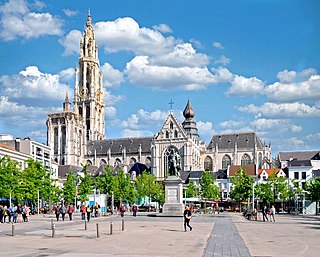
The Cathedral of Our Lady is a Roman Catholic cathedral in Antwerp, Belgium. Today's see of the Diocese of Antwerp started in 1352 and, although the first stage of construction was ended in 1521, has never been 'completed'. In Gothic style, its architects were Jan and Pieter Appelmans. It contains a number of significant works by the Baroque painter Peter Paul Rubens, as well as paintings by artists such as Otto van Veen, Jacob de Backer and Marten de Vos.

St. James' Church is a former collegiate church in Antwerp, Belgium. The church is built on the site of a hostel for pilgrims to Santiago de Compostela. The present building is the work of the Waghemakere family and Rombout Keldermans, in Brabantine Gothic style. The church contains the grave of Peter Paul Rubens in the eastern chapel.

Lucas Faydherbe was a Flemish sculptor and architect who played a major role in the development of the High Baroque in the Southern Netherlands.
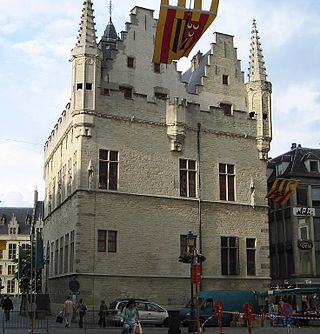
From the 15th century onwards, the Great Council of the Netherlands at Mechelen was the highest court in the Burgundian Netherlands. It was responsible for the Dutch-, French- and German-speaking areas. In Luxembourgish the phrase "mir ginn op Mechelen" still means playing one's last trump card. The Grote Raad first sat in the Schepenhuis in Mechelen then, from 1616, in the (old) palace of Margaretha of Austria on Keizerstraat.

The House of Ursel is the name of an old Belgian noble family of German origin. The Head of the House is styled as Duke of Ursel, while other members are styled as Count/Countess of Ursel.

Charles Emmanuel Biset or Karel Emmanuel Biset was a Flemish painter who had a peripatetic career working in various cities and countries including his hometown Mechelen, Paris, Annonay, Brussels, Antwerp and Breda. He worked in many genres including genre scenes of interiors with merry companies and gallery paintings, history painting, still life and portraiture.

HelenaFourment was the second wife of Baroque painter Peter Paul Rubens. She was the subject of a few portraits by Rubens, and also modeled for other religious and mythological paintings.
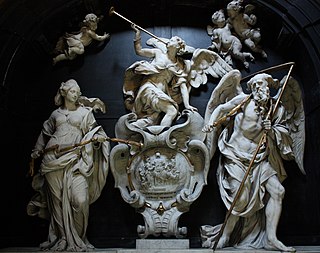
Mattheus van Beveren was a Flemish sculptor and medalist who is mainly known for his monumental Baroque church sculptures and small wood and ivory sculptures. He also made medals and die designs for the Antwerp Mint.

Anthonius Triest, was the fifth bishop of Bruges and the seventh bishop of Ghent.

The St Walburga Church in Antwerp, Belgium, formerly a parish church, was demolished in 1817.

Anthony van Stralen, Lord of Merksem, Lord of Dambrugghe was a Mayor of Antwerp. Although he was Roman Catholic, he became a famous victim of the terror of the Duke of Alva.
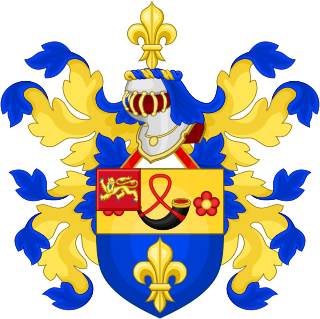
The Rubens family is a Flemish noble family that lived in Antwerp.

Nicolaas Peter Paul Rubens, Lord of Rameyen (1618–1655) was a son of the painter Peter Paul Rubens and Isabella Brant.

Alexander Joseph Rubens, Lord of Vremdyck, Willenskerk, Ter Schriek, Liesele, Malderen and steenhuffel was a Flemish noble man. He was the last male heir of his grandfather.
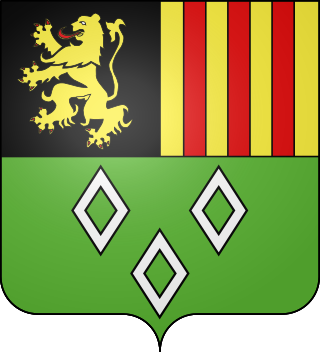
The House of Glymes was an old Belgian noble family, an illegitimate branch of the House of Reginarid, which ruled the Duchy of Brabant. Glymes or Glimes is a municipality of Incourt. Their descendants of the branch of Grimberghen are styled as the Prince de Grimberghen.
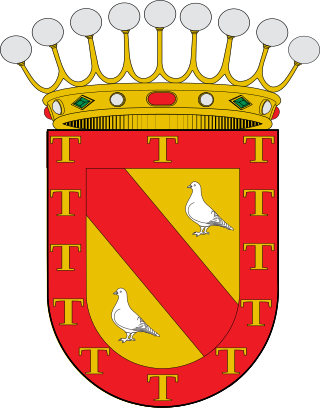
Coloma or de Coloma or Colomba is an old important Spanish Noble House. A branch belongs to the Flemish nobility, and became the Counts of Bornhem. Other branches became the Counts of Elda, Marquesses of Espinar, Marquesses of Noguera and Marquesses of Canales de Chozas.

Saint Waltrude Collegiate Church is a Roman Catholic parish church in Mons, Belgium, named in honour of Saint Waltrude. The church is a notable example of Gothic architecture, and is protected by the heritage register of Wallonia.

Hendrik de Moy was secretary of the Antwerp city council and a historian.
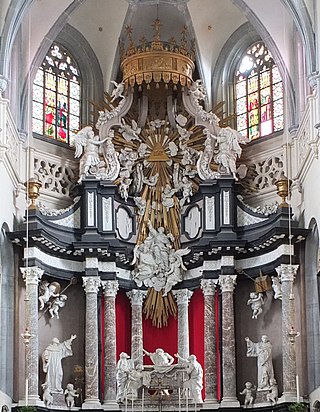
Willem Ignatius Kerricx was a Flemish sculptor, painter, draftsman, architect, engineer, playwright and author active in Antwerp in the first half of the 18th century. His sculptural works comprise mostly sculptured church furniture, individual sculptures, mainly statues of saints for churches and a few funerary monuments. His sculptural style is typical for the late Flemish Baroque while he shows a preference for Classicism in his architectural projects. He took over the large family sculpture workshop in Antwerp. As a painter he created both history paintings for churches and still lifes. He was also employed as an architect and engineer, mainly on reconstruction projects. In his youth, he composed a number of comedies and tragedies for the Antwerp theatre.






















